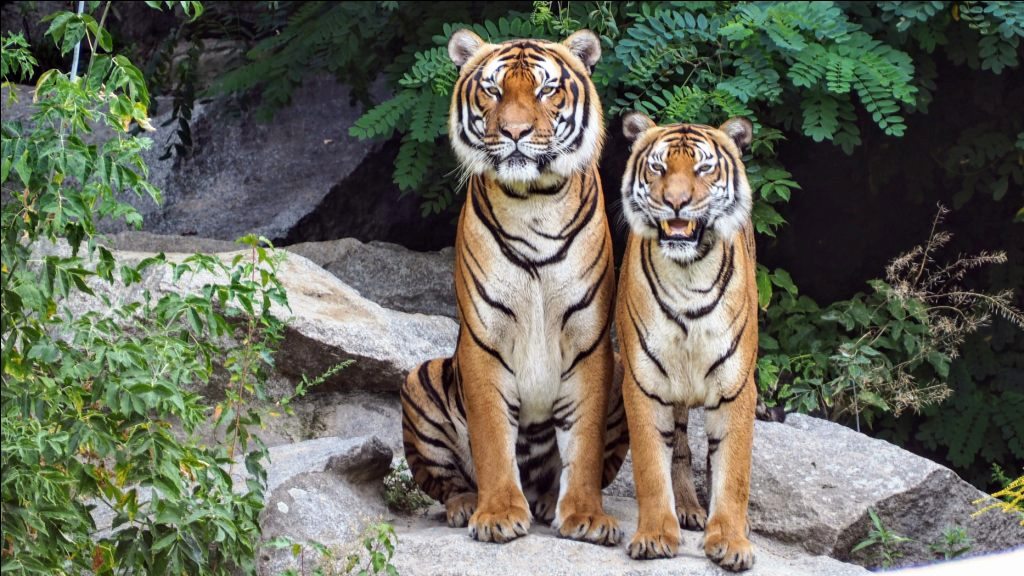The Asiatic Society recently marked International Tiger Day with an illuminating exhibition and seminar, underscoring the profound historical, ecological, and cultural significance of the tiger in India. The event provided a comprehensive look at the majestic animal’s enduring presence in the nation’s heritage, from everyday objects to pivotal conservation milestones.
A Glimpse into the Tiger’s Cultural Tapestry
The exhibition was a vibrant display of tiger imagery across an eclectic range of items, demonstrating the animal’s pervasive influence in Indian life. Attendees observed tiger motifs on vintage matchboxes, classic books, dictionaries, and even logos of state transport corporations. Highlights included ₹10 currency notes, traditional puffed rice (muri) packets, Jim Corbett-themed keychains, and replicas of Calcutta Tramways Company (CTC) trams and buses. A dedicated pictorial album on tigers and a special book commemorating Jim Corbett’s 150th birth anniversary further enriched the exhibit.
Researcher Srijan, currently an Asiatic Society fellow and a PhD candidate at Jadavpur University specializing in snake worship, contributed significantly to the event, drawing on his 6-7 years of dedicated work on tigers.
Echoes from the Field: Pioneering Census Efforts
Mita Singha, India’s first female tiger census officer, offered a captivating account of her experiences from the 1980s. She vividly recalled the challenging manual census operations alongside Dr. A.C. Gayen, Rabi Dev Ray (DFO), Byomkesh Dutta (Ranger Officer), and others. Their work involved meticulous pugmark identification, plaster castings, and direct field observation in areas like Kalash Island and Thakuran.
Singha recounted a chilling incident where a local cried, “amar chele ke niye geche bagh” (“the tiger took my son”), highlighting the intense human-wildlife conflict prevalent at the time. She described witnessing tigers leaping 15 feet while hunting and noted the limitations rescue units faced despite numerous sightings. A particularly memorable moment involved four tigers appearing during a census, with a deer nearby, yet no attack occurred,a testament to the complex and often unpredictable nature of tiger behavior.
A Historical Roar: From Royal Hunt to Conservation Triumph
Shubhankar Sengupta, former Director of Alipore Zoo and an IFS officer, provided crucial historical context on India’s tiger population. He revealed that India once harbored over a lakh (100,000) tigers. Hunting, once a royal pastime, saw King George V reportedly hunt 39 tigers in a single trip in 1911, while the Maharaja of Cooch Behar was credited with killing over 1,000. Commercial export of tiger skins continued post-independence until a significant shift in government policy in the 1960s.
This shift culminated in the enactment of the Wildlife Protection Act in 1972 and the launch of Project Tiger in 1973. From an initial 9 tiger reserves, India now boasts 58. A major reform in 2006 led to the establishment of the National Tiger Conservation Authority (NTCA), a statutory body, further strengthening conservation efforts.
Globally, tiger populations have tragically disappeared from countries like Cambodia, Laos, and Vietnam. However, at the 2010 St. Petersburg Convention, a global commitment was made to double the tiger population by 2022. India, alongside Nepal, Bhutan, and Russia, has successfully met this ambitious target, showcasing a remarkable conservation success story.
The Ongoing Challenges of Coexistence
Despite these triumphs, tiger conservation remains fraught with complexities. High cub mortality is a significant concern, with often only 1 or 2 out of 10 cubs surviving due to threats from male tigers or other predators. As cubs disperse after three years to establish new territories, instances of human-wildlife conflict are on the rise. Recent examples include tigers appearing in sugarcane fields near Uttar Pradesh’s Pilibhit Tiger Reserve, sightings in the Lakhimpur Kheri zone, and increasing presence outside designated reserves in Maharashtra’s Tadoba-Andhari Reserve.
The enduring myth of the “man-eater” tiger was also addressed, with experts emphasizing that nearly 60% of tiger hunting attempts are unsuccessful. Attacks on humans typically occur when individuals encroach into tiger habitats, particularly when the animal is hungry. Domestic cattle continue to be a primary food source for tigers. Furthermore, concerns were raised about the exploitation of tiger habitats for tourism under the guise of conservation.
The event also paid homage to prominent conservationists like Padma Shri Tushar Kanjilal, Padma Shri Parbati Barua, and Pranabesh Sanyal through various memorabilia. The inclusion of themed cards, bookmarks, masks from Mangal Shobhajatra (celebrated on Poila Boishakh), and idols of tigers and elephants added a crucial cultural dimension to the broader tiger conservation narrative.


